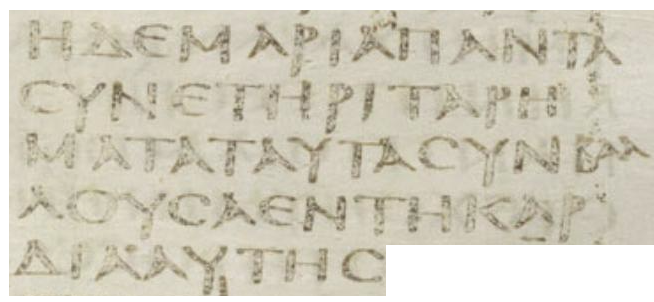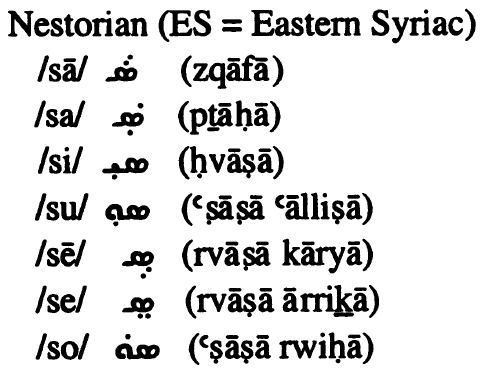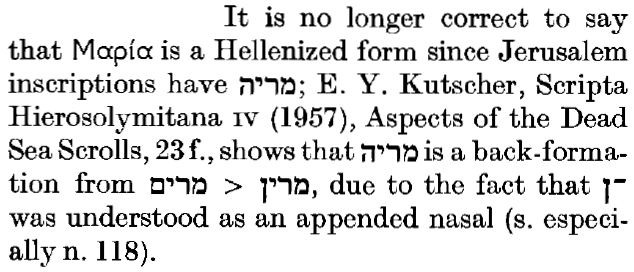I continue to question whether the ‘Passion Translation’ New Testament is really translated from Greek, as is claimed. In this post I look at Brian Simmons’ footnote to John 2.3 in the 2015 edition of John: Eternal Love.
John 2.1-3
1) Καὶ τῇ ἡμέρᾳ τῇ τρίτῃ γάμος ἐγένετο ἐν Κανὰ τῆς Γαλιλαίας, καὶ ἦν ἡ μήτηρ τοῦ Ἰησοῦ ἐκεῖ·
2) ἐκλήθη δὲ καὶ ὁ Ἰησοῦς καὶ οἱ μαθηταὶ αὐτοῦ εἰς τὸν γάμον.
3) καὶ ὑστερήσαντος οἴνου λέγει ἡ μήτηρ τοῦ Ἰησοῦ πρὸς αὐτόν· οἶνον οὐκ ἔχουσιν.
1 On the third day there was a wedding in Cana of Galilee, and the mother of Jesus was there. 2 Now both Jesus and His disciples were invited to the wedding. 3 And when they ran out of wine, the mother of Jesus said to Him, “They have no wine.” [NKJV]
1 On the third day there was a wedding in Cana of Galilee, and the mother of Jesus was there; 2 and both Jesus and His disciples were invited to the wedding. 3 When the wine ran out, the mother of Jesus *said to Him, “They have no wine.” [NASB]
1 On the third day there was a wedding at Cana in Galilee, and the mother of Jesus was there. 2 Jesus also was invited to the wedding with his disciples. 3 When the wine ran out, the mother of Jesus said to him, “They have no wine.” [ESV]
In John: Eternal Love (2015), the passage read:
I must refrain from commenting on Simmons’ version of these three verses as a whole, except to say that he adds to and subtracts from the original in a reckless and dangerous way. I draw attention here only to footnote ‘c’ to verse 3. It will be seen that Simmons has substituted ‘Miriam’ for ‘the mother of Jesus’. One would expect the footnote to call attention to the fact that the original text read:
ἡ μήτηρ τοῦ Ἰησοῦ
meaning
the mother of Jesus
and then explain why he has elected to call her by name instead. But in fact he gives
Mary
as the only alternative translation to
Miriam
and then explains why he prefers Miriam to Mary:
This strikes me as very odd. Why does he give ‘Mary’ as an alternative ‘translation’ of ἡ μήτηρ τοῦ Ἰησοῦ? Why does:
not read:
c Or “the mother of Jesus”
or something along those lines. Why does he protest against translations supposedly substituting ‘Mary’ for ‘Miriam’ when, so far as I can see, no previous translations called the mother of Jesus ‘Mary’ in this verse? And why should they, since her name is not in the original text? Does this make any sense at all? Was Brian Simmons even looking at the text?
Mary’s name in Greek
Simmons goes on to say in his footnotes that both Greek and Aramaic have the mother of Jesus’s name as Miriam:
Is this true? Here is Luke 1.27, for example:
πρὸς παρθένον ἐμνηστευμένην ἀνδρὶ ᾧ ὄνομα Ἰωσὴφ ἐξ οἴκου Δαυὶδ καὶ τὸ ὄνομα τῆς παρθένου Μαριάμ. [NA 28]
to a virgin engaged to a man whose name was Joseph, of the descendants of David; and the virgin's name was Mary. [NASB]
Μαριάμ is transliterated into English as Mariam, not Miriam.
In Luke 2.19 and Matthew 1.20, in several important manuscripts, and in textual variants to some other verses, Mary’s name is given as Μαρία (Maria). Here, for example, is Luke 2.19 in Sinaiticus:
(The text in Greek capitals can serve as a guide to reading the uncial script:
Η ΔΕ ΜΑΡΙΑ ΠΑΝΤΑ ΣΥΝΕΤΗΡΙ ΤΑ ΡΗ- ΜΑΤΑ ΤΑΥΤΑ ΣΥΝΒΑΛ ΛΟΥΣΑ ΕΝ ΤΗ ΚΑΡ- ΔΙΑ ΑΥΤΗΣ
ϲ being the uncial form for sigma, Σ.)
Thus:
ἡ δὲ Μαριὰ πάντα συνετήρ[ε]ι τὰ ῥήματα ταῦτα συμβάλλουσα ἐν τῇ καρδίᾳ αὐτῆς.
But Mary kept all these things and pondered them in her heart. [NKJV]
These two forms, Μαριάμ and Μαρία, are the only two that appear in the New Testament. Is it plausible that somebody who is translating from Greek would say that Mary’s name is Miriam in the Greek New Testament?
Andrew Chapman
addendum: aramaic and hebrew
In the same verse in the Peshitta: 1
ܡܲܪܝܲܡ ܕܹ݁ܝܢ ܢܵܛܪܵܐ ܗ݈ܘܵܬ݂ ܟܼ݁ܠܗܹܝܢ ܡܸܠܹܐ ܗܵܠܹܝܢ ܘܲܡܦ݂ܲܚܡܵܐ ܒ݁ܠܸܒ݁ܵܗ
maryam dēn nāṭrā wāṯ kulhēn melle hālēn wampaḥmā bəlebbāh)
the name of Jesus’s mother is:
ܡܲܪܝܲܡ
The dots above and below both the first consonant mim and the third consonant yodh are the vowel Pṯāḥā, with a short ‘a’ sound, as shown in this table of the Eastern Syriac vowel system in Muraoka: 2
Correspondingly in the Hebrew transliteration of this verse, there is a pataḥ under both the mem and the yod:
מַריַם דֵּין נָטרָא הוָת כֻּלהֵין מֵלֵא הָלֵין וַמפַחמָא בּלֵבָּה
Thus the name in Aramaic is ‘Maryam’, to be pronounced ‘Mar-yam’, not as in ‘Mariam’.
Hebrew
Simmons also claims that the name of Jesus’s mother in Hebrew would have been Miriam. Is this true?
The name of Moses’ sister, as given in Exodus 15.20 for example, was מִרְיָ֨ם , which transliterates as miryām, to be pronounced ‘Mir-yam’, with the stress on the second syllable. ‘Miriam’ is probably a reasonable approximation in English. In the same verse in the Septuagint, however:
Λαβοῦσα δὲ Μαριαμ ἡ προφῆτις ἡ ἀδελφὴ Ααρων τὸ τύμπανον ἐν τῇ χειρὶ αὐτῆς, καὶ ἐξήλθοσαν πᾶσαι αἱ γυναῖκες ὀπίσω αὐτῆς μετὰ τυμπάνων καὶ χορῶν,
her name is given as Μαριαμ, and is rendered accordingly as ‘Mariam’ in both Brenton and NETS:
Then Mariam, the prophetess, the sister of Aaron, took the tambourine in her hand, and all the women went out after her with tambourines and dances. [NETS]
The Greek Pentateuch was probably translated during the reign of Ptolemy II Philadelphus (283-246 BC). 3 May the Jewish name the translators were familiar with have been nearer to Mariam than Miriam?
Moreover, according to BDF §53(3) 4, there are Jerusalem inscriptions with the form מריה (mryh), with the implication that there could even have been a Jewish name more or less similar to Μαρία, or Maria:
If there is uncertainty about the Hebrew form of the name, then it seems to me that our best estimate of the name in Hebrew of Mary the mother of the Lord Jesus, might come from the forms we have of it in the Greek New Testament, Μαριάμ and Μαρία. Of the two, Μαριάμ is more strongly attested. So, if one wants to come a little closer to the name she was actually known by, ‘Mariam’ might be a reasonable approximation in English.
Andrew Chapman
Notes:
- Text and transliterations from the Peshitta Tool at dukhrana.com. ↩
- T. Muraoka, Classical Syriac, 2nd rev. ed. (Wiesbaden: Harrassowitz, 2005) p. 7 ↩
- H. B Swete, An introduction to the Old Testament in Greek, rev. R. R. Otley (Hendrickson, 1989) p. 24. ↩
- Blass, F., Debrunner, A., & Funk, R. (1961). A Greek grammar of the New Testament and other early Christian literature. Chicago ; and London. ↩





